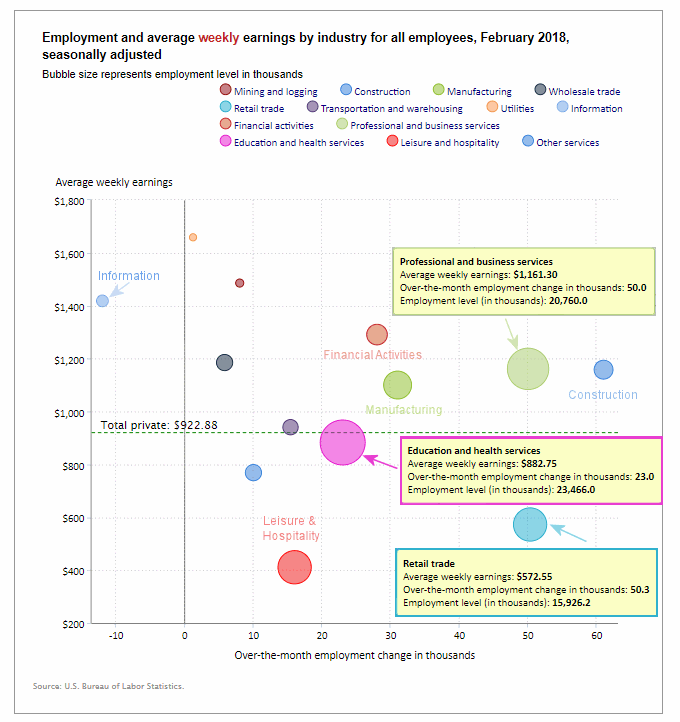The U.S. Bureau of Labor Statistics (BLS) released their monthly unemployment survey results for December on January 4th and some are calling it a “monster” jobs report causing the DOW to gain almost 747 points (3.29%). The reason for this is that the “Seasonally Adjusted” jobs number was up 312,000 while the consensus was expecting an increase of only 176,000.
However all is not roses in employment land. There are a few thorns in the jobs report. Both Adjusted and Unadjusted Unemployment were actually up and Unadjusted Employment was down.
Adjusted U-3 was 3.9% up from 3.7% in November. Unadjusted U-3 was 3.7% up from 3.5% in November. Unadjusted U-6 was also up from 7.2% in November to 7.5% in December. Unadjusted Employment- 151.190 million down from 151.244 million in November. All of this sounds Bad! The major factor that the market has latched onto in this report is the Labor Force Participation Rate which has bounced above 63% for the first time since 2014. See Labor Force Participation below for more.
As I have been saying for a while typically unemployment doesn’t stay below 4% for very long. As we can see from the chart below the dip in 2006-7 didn’t even get below 4%. The 2000 dip only spent a couple of months below 4%. The 1960, 1973, ’79 and ’89 dips didn’t get below 4% at all.
The three major exceptions are: [Read more…] about December “Monster” Jobs Report (or is it?)

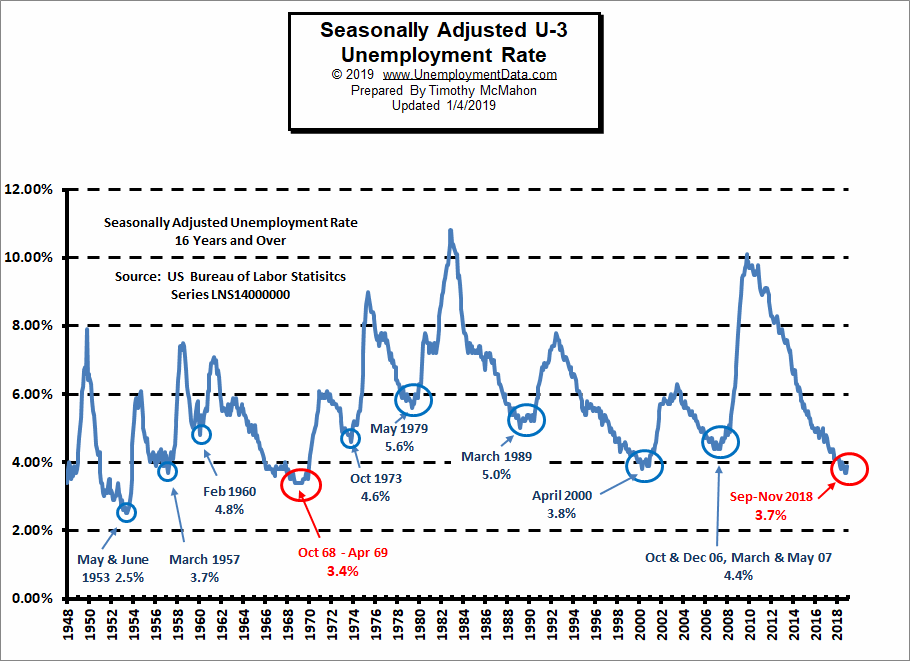
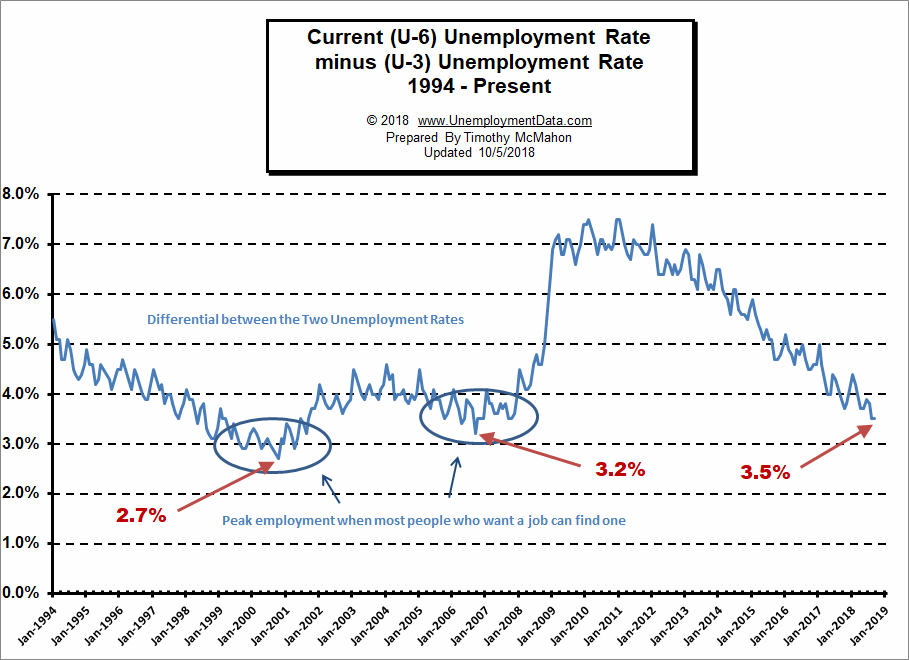

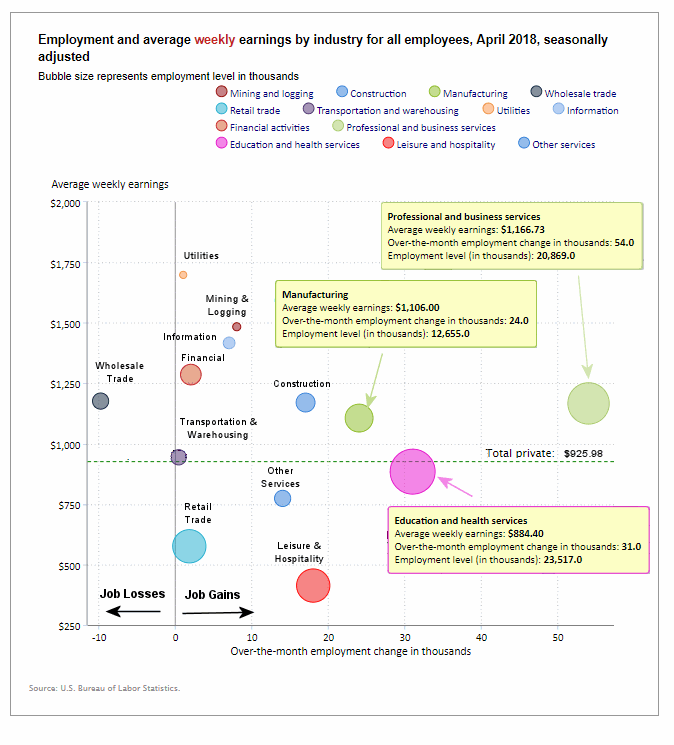
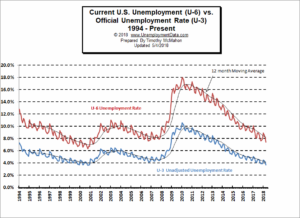 Looking at the broader measure of
Looking at the broader measure of 
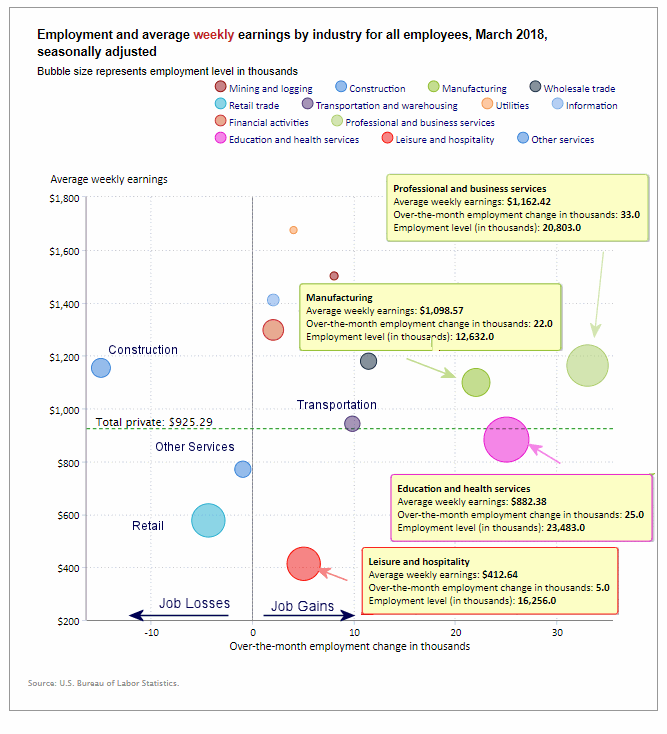
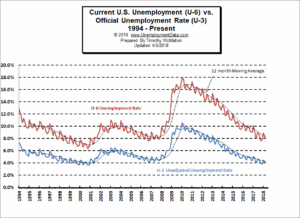 Looking at the broader measure of Unemployment which includes discouraged workers, we see that the U-6 unemployment rate fell from 8.9% in
Looking at the broader measure of Unemployment which includes discouraged workers, we see that the U-6 unemployment rate fell from 8.9% in 
